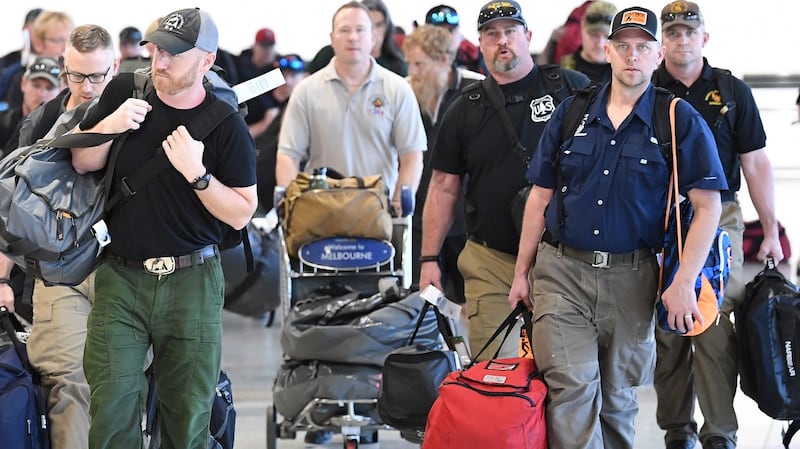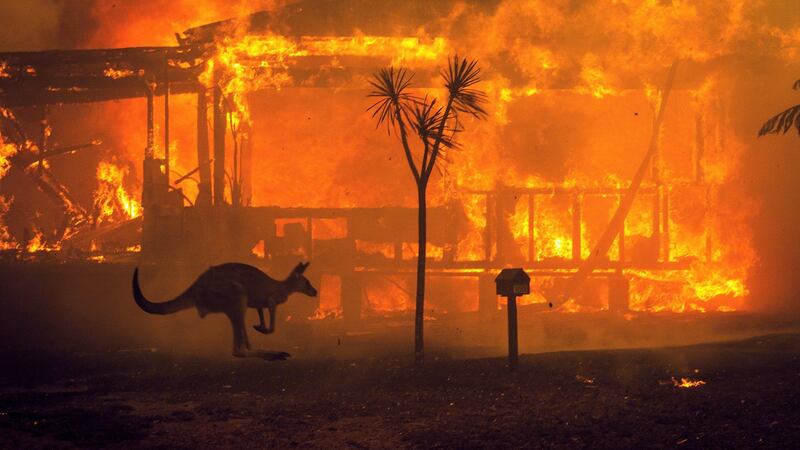Thousands of tourists have fled Australia’s wildfire-ravaged eastern coast ahead of worsening conditions as the military started to evacuate people trapped on the shore further south.
Cooler weather since Tuesday has aided firefighting and allowed people to replenish supplies.
Vehicles formed long queues at petrol stations and supermarkets, with traffic gridlocked as motorways reopened.
But fire conditions were expected to deteriorate on Saturday as high temperatures and strong winds return.
"There is every potential that the conditions on Saturday will be as bad or worse than we saw [on Tuesday]," said New South Wales rural fire service deputy commissioner Rob Rogers.
Authorities said 381 homes had been destroyed on the New South Wales (NSW) southern coast this week, while 18 people have died since the fires began burning.
At least eight people have died this week in NSW and neighbouring Victoria, Australia’s two most-populous states, where more than 200 fires are burning.
NSW authorities have ordered tourists to leave a 250km zone along the picturesque south coast, which state transport minister Andrew Constance described as the "largest mass relocation of people out of the region that we've ever seen".
In Victoria, where 68 homes have burned this week, the military was helping thousands of people who fled to the shore as a wildfire threatened their homes on Tuesday in the coastal town of Mallacoota.
Food, water, fuel and medical expertise were being delivered and about 500 people were going to be evacuated from the town by a naval ship.
"We think around 3,000 tourists and 1,000 locals are there. Not all of those will want to leave, not all can get on the vessel at one time," Victoria premier Daniel Andrews told the Australian Broadcasting Corporation.


Some five million acres of land – an area almost the size of Croatia – have burned nationwide over the past few months, with more than 1,300 homes destroyed.
Prime minster Scott Morrison said the crisis was likely to last for months.
“It [fires] will continue to go on until we can get some decent rain that can deal with some of the fires that have been burning for many, many months,” said Mr Morrison.
Prime minister heckled
But the PM was heckled as he visited Cobargo, a New South Wales village where fires have killed two men and destroyed the main street. He left hurriedly. “You won’t be getting any votes down here, buddy!” yelled one man at Mr Morrison as he returned to his vehicle. “You’re over, son.”
The prime minister said he understood residents’ frustration. “I’m not surprised people are feeling very raw at the moment. That’s why I came today, to be here, to see it for myself, to offer what comfort I could.”
Mr Morrison told the Australian Broadcasting Corporation he understood “the very strong feelings people have, they’ve lost everything”. He added that there are still “some very dangerous days ahead”.
Smoke from the wildfires caused the air quality in the national capital, Canberra, to be the world's worst.
NSW premier Gladys Berejiklian declared a seven-day state of emergency starting on Friday, which grants the New South Wales Rural Fire Service commissioner more control and power.
It is the third state of emergency for New South Wales in the past two months, after previously not being implemented since 2013. –PA/New York Times







